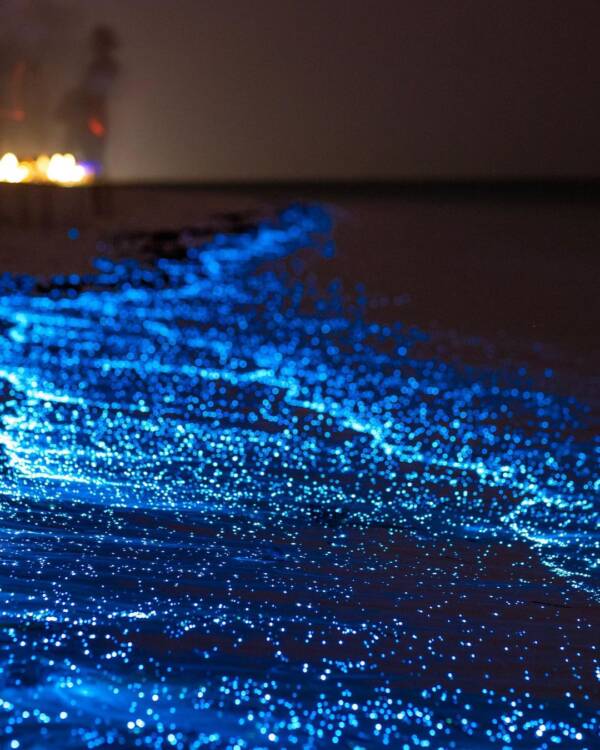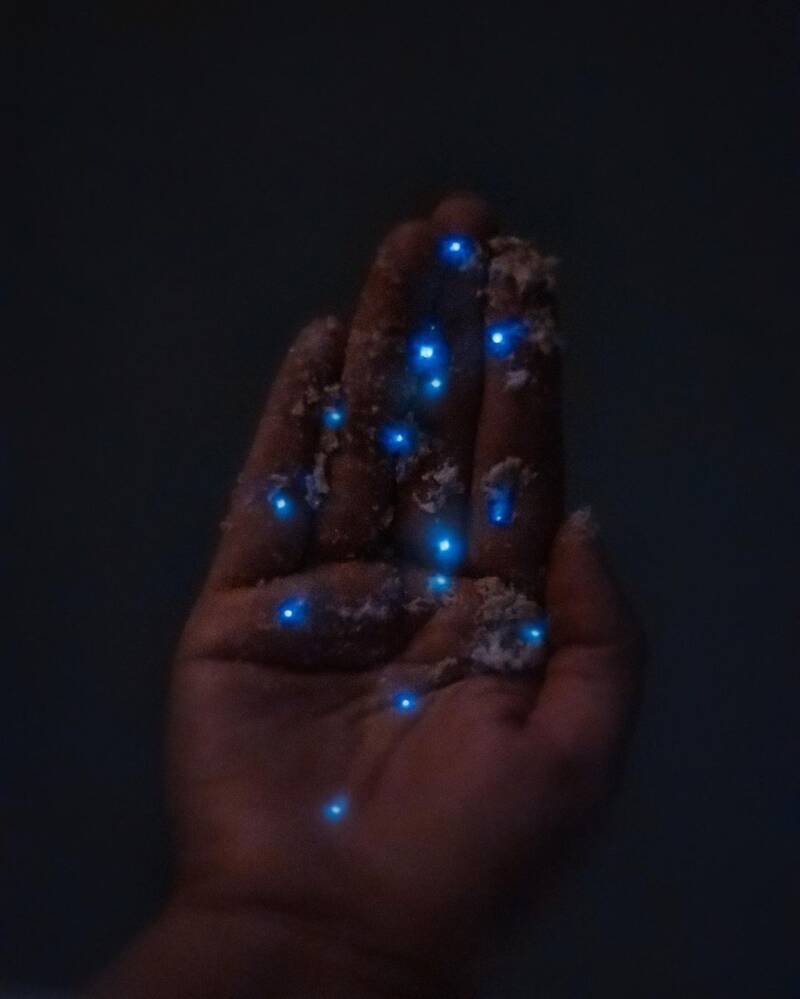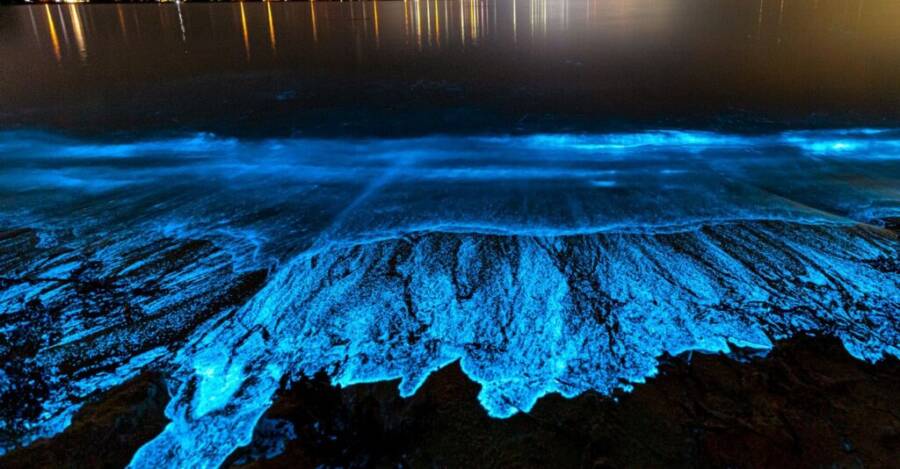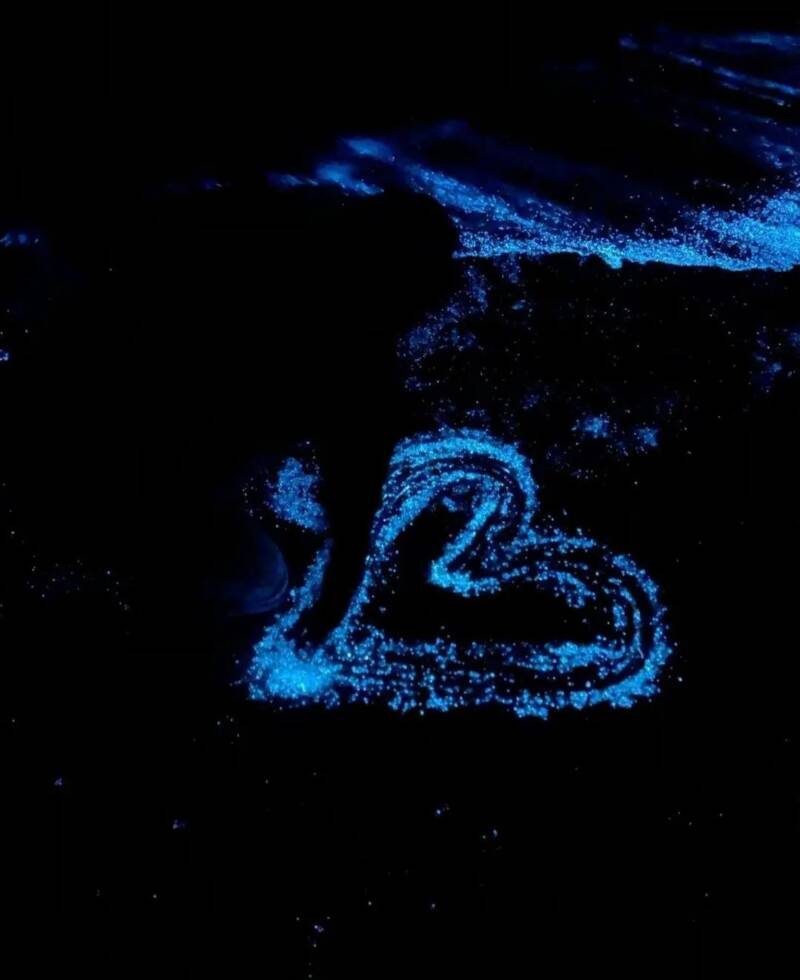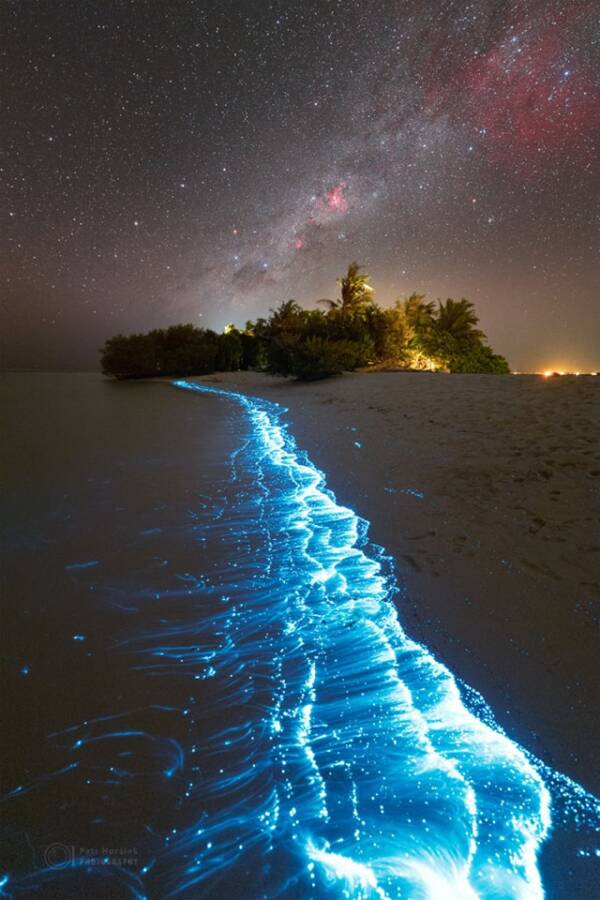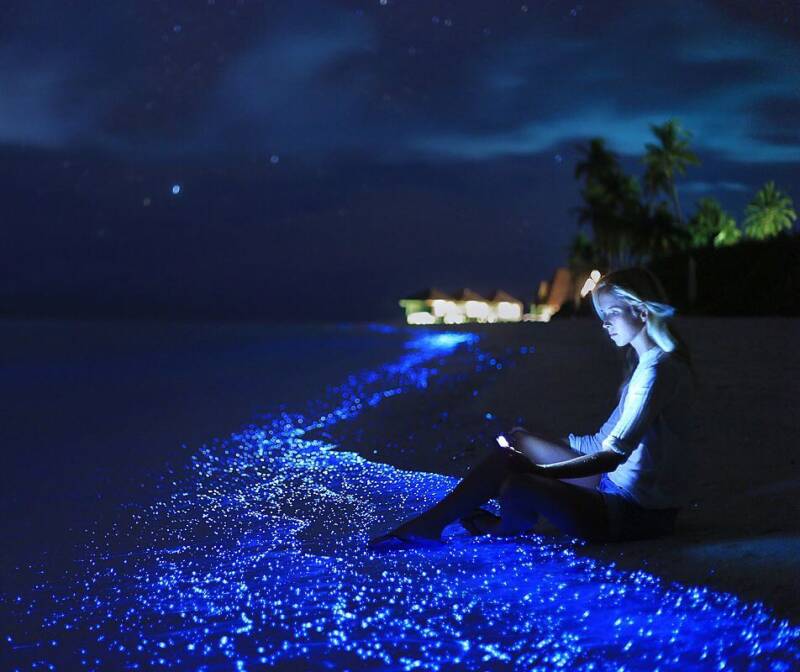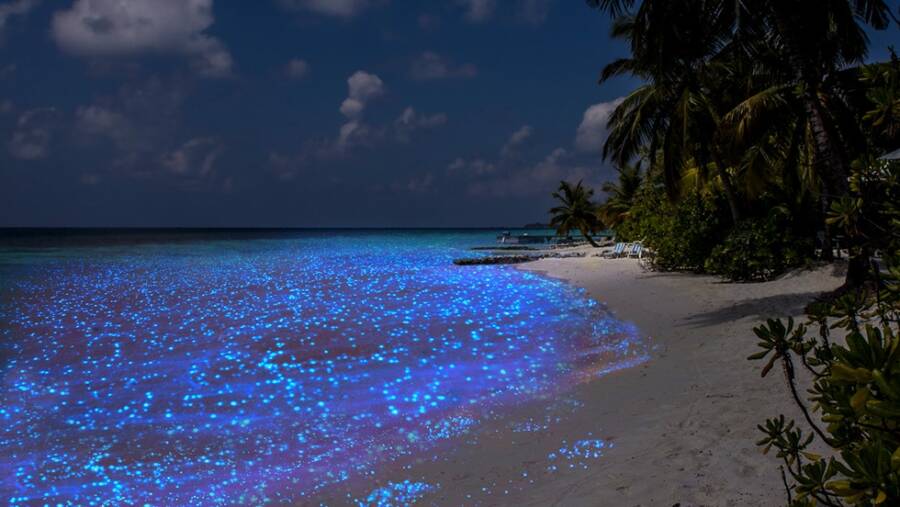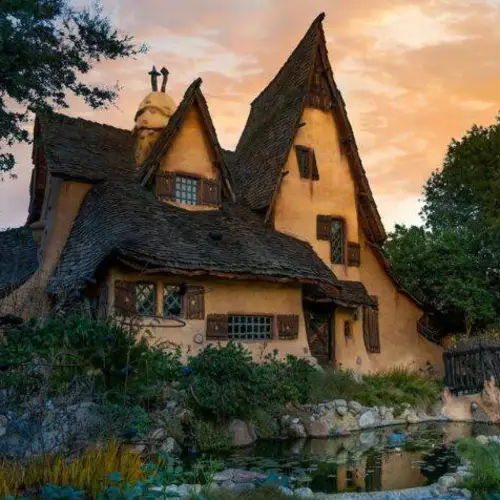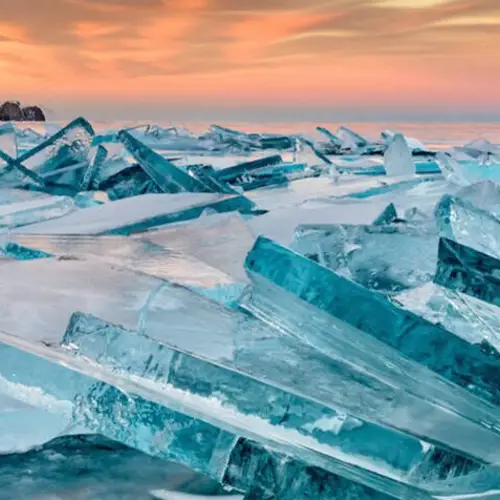On the island of Vaadhoo in the Maldives, tourists gather every year in the hopes of seeing a magical light show — powered by bioluminescent phytoplankton.

Doug Perrine/Barcroft Media/FlickrThe Sea of Stars on the shores of Vaadhoo Island in the Maldives.
The Republic of Maldives is an archipelago nation in the Indian Ocean known for its ocean views, white sand beaches, and luxurious resorts. And while those are reasons enough to visit, one island in particular draws tourists for an entirely different reason: the Sea of Stars.
This natural light show, graciously put on by the bioluminescent phytoplankton in the waters surrounding Vaadhoo Island, flashes bright blue when conditions are right, creating a scene straight from a dream.
And for those lucky enough to see it, it is a once-in-a-lifetime experience.
What Is The Maldives Sea Of Stars?
Anyone who has been to the Maldives can testify to the beauty of its beaches. This South Asian island nation sits on the equator in the Indian Ocean and is home to 26 atolls and about 1,190 coral islands, according to the Maldives Embassy.
Every year, more than a million tourists flock to the islands of the Maldives, which are best known for being a luxury destination for honeymooners and vacationers.
But among the nation's many stunning beaches is one that stands out: the shores of Vaadhoo, a tiny island in Raa Atoll with just about 500 inhabitants. There, the water glows electric blue in a brilliant natural light display best seen in late summer and early fall.
Dubbed "Redhan lun" by the locals, the phenomenon is also called "Sea of Stars" in reference to its incredible resemblance to stars in the night sky.
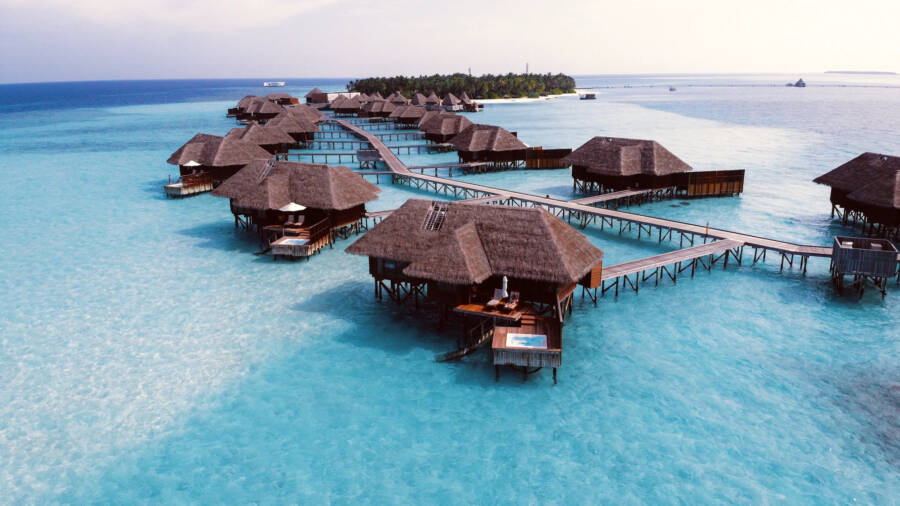
Mike Swigunski/UnsplashResorts on Vaadhoo Island in the Maldives.
Although this glow can appear on several beaches around the Maldives, Vaadhoo Island is considered the prime location to view it. Unfortunately for visitors looking to get a glimpse of the Maldives Sea of Stars, the event comes and goes at random depending on a number of conditions, including climate and bioluminescent plankton growth, Culture Trip reports.
And while it's impossible to predict exactly when the phenomenon will occur, visitors who experience it are treated to a magical experience.
What Causes The Water's Signature Glow?
The electric glow of the Maldives Sea of Stars comes from a chemical reaction called bioluminescence. When dinoflagellates, a kind of microscopic plankton, are agitated by the movements of the water, they can release a chemical called luciferin. When luciferin mixes with oxygen, the phytoplankton emit a neon blue light.
This remarkable reaction acts as defense mechanism against predators, but can also be triggered by rougher ocean conditions. Thankfully, the bioluminescence is not harmful to humans, and the water is safe to touch and swim in.
However, the same can't be said for would-be predators. Animals that are unlucky enough to eat these microorganisms often start glowing themselves, attracting bigger predators that eventually consume them.
But for non-predators who simply wish to see these microorganisms in all their electric blue glory, the opportunity awaits.
As a representative for Visit Maldives wrote,
"The Sea of Stars elicits a sense of awe and wonder in all who witness it. For many, the bioluminescent plankton brings out a childlike sense of curiosity and wonder. It reminds us of the beauty and mystery of the natural world. If you are seeking an encounter with the bioluminescent plankton, perhaps visit the Maldives... You might just be one of the lucky ones!"
Where Else Can You See Bioluminescence?
For those who may not have the opportunity to see the Maldives Sea of Stars in person, it is important to note that bioluminescent organisms float in the waters of a number of other beaches around the world.
Beaches similar to the Sea of Stars exist everywhere from Leucadia in California, to Mosquito Bay in Puerto Rico, to the Lakshadweep Islands in India.
And for those unable to make the journey to any of these places, famous movies like Life of Pi have demonstrated the incredible beauty of bioluminescent organisms onscreen.
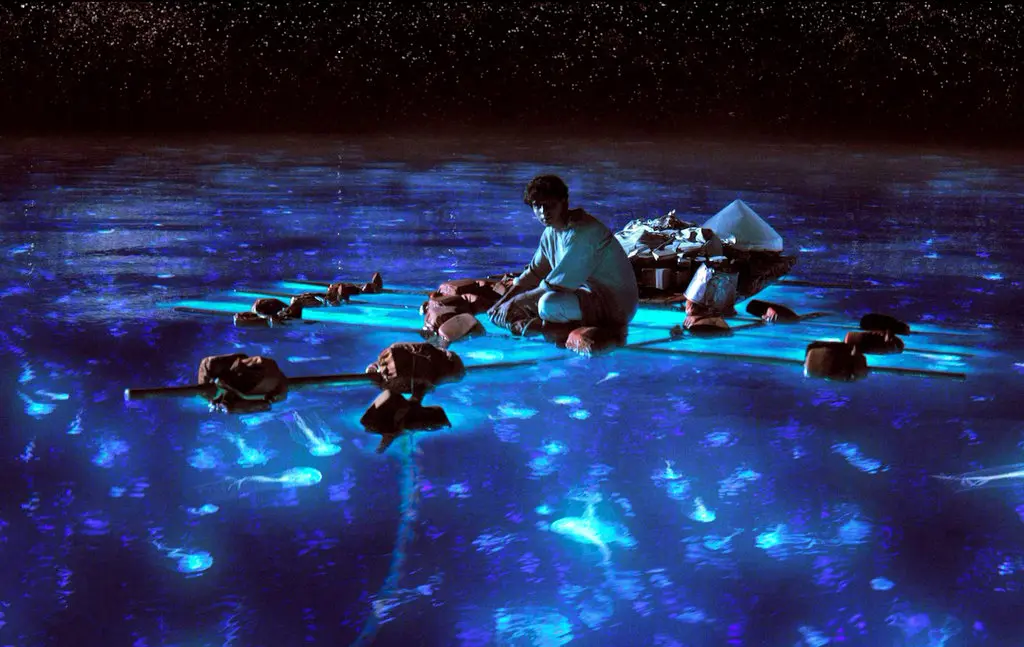
20th Century FoxA scene from the film Life of Pi in which the protagonist is guided by bioluminescent creatures.
So grab a plane ticket or television remote and enjoy the sight of one of nature's most spectacular wonders.
After seeing the beautiful Sea of Stars in the Maldives, check out these awe-inspiring images of the world's deepest freshwater lake. Then, read about another beach with a unique feature: swimming pigs.

